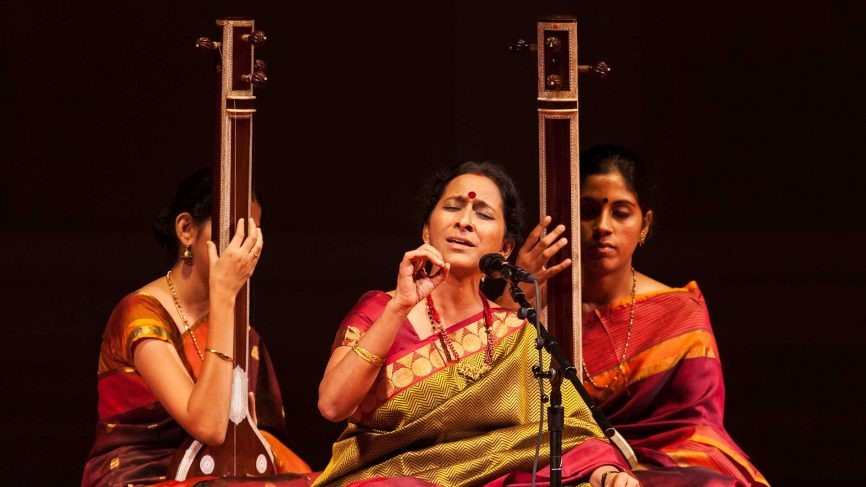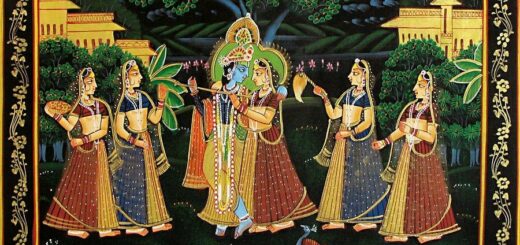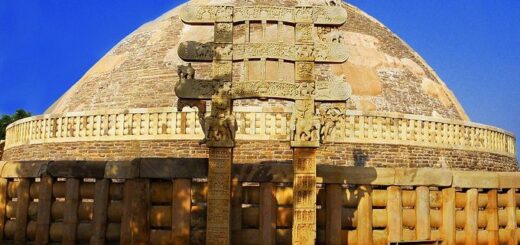Art & Culture: Indian Music
Introduction

- Natyasastra of Bharata which is supposed to have been written sometime between 2nd century B.C and 2nd century A.D is a landmark in the history of Indian music. It has several chapters that have formed the basis for the development of Indian music. It is believed that Indian music was more or less uniform till the 13th century but later bifurcated.
- Today we recognise two systems of classical music: the Hindustani and the Carnatic. Carnatic music is confined to Karnataka, Andhra Pradesh, Tamil Nadu and Kerala.
- The classical music of the rest of the country goes under the name, Hindustani Classical Music. Of course there are some areas in Karnataka and Andhra where the Hindustani Classical system is also practiced. Karnataka has given us in the recent past some very distinguished musicians of the Hindustani style.
- The present Indian music has grown from ancient times. Almost every tribe or people have lent their own share in this growth. What therefore, we now call a raga might have started as a tribal or folk tune.
- It is usual to begin the history of Indian music with the melodic patterns of vedic chanting. The oldest music, which possessed a grammar was the vedic. Of course, the Rig-Veda is said to be the oldest: nearly 5000 years old. The psalms of the Rig-Veda were called the richas.
- TheYajur Veda was also a religious chant. But actual music in Northern or Southern India, of those bygone days could not have only been of this kind.
- There were non-Aryan people with their own art. For instance, Santhal music from the Eastern region of India may have been passed down from them. While the differences are obvious, there is no doubt that such music of the people contributed to the formation of what we now call Hindustani Classical Music.
- Natya Shastra of Bharata is another important landmark in the history of Indian music. It is supposed to have been written sometime between the 2nd century B.C. and the 2nd century A.D.
- The Natya Shastra is a comprehensive work mainly dealing with dramaturgy. But a few chapters of this deal with music. Therein we get information on scales, melodic forms, tala and musical instruments.
Hindustani Music
- The Hindustani music originated in North India during the 13th and 14th century. It focuses more on musical structure.
- It has been influenced by various elements such as Arab, Persian and Afghan elements which have added a new dimension to the Hindustani music.
- Hindustani music adopted the scale of Shudha Swara Saptaka or the Octave of Natural Notes .
|
Dhrupad |
Dhrupad is an old style of singing, traditionally performed by male singers. It is performed with a tambura and a pakhawaj as instrumental accompaniments. |
| Khyal |
Khyal is the more modern Hindustani form of vocal music. Khyal, literally meaning “thought” or “imagination” in Hindustani and is based on improvising and expressing emotion. |
|
Taranas |
They are medium- to fast-paced songs that are used to convey a mood of elation & are usually performed towards the end of a concert. They consist of a few lines of poetry. |
|
Tappa |
Tappa is a form of Indian semi-classical vocal music whose specialty is its rolling pace based on fast, subtle, knotty construction. It originated from the folk songs. |
|
Thumri |
Thumri is a semi-classical vocal form which begun in Uttar Pradesh with the court of Nawab Wajid Ali Shah. There are 3 types of thumri: poorab ang, Lucknavi and Punjabi thumri. |
| Ghazal |
Ghazal became the most common form of poetry in the Urdu language & was popularized by classical poets like Mir Taqi Mir, Ghalib, Daagh & Sauda amongst the North Indian literary elite. |
Types of compositions

Melody
- The melodic ingredient of Hindustani music is known as the ‘rag’. The rag forms the basis of the melodic improvisation in performance. The term ‘rag’ comes from a Sanskrit word ‘raga’, meaning ‘emotion’ or ‘colour’.
- The performance of a ‘rag’ was intended to communicate a particular emotion or mood. There are a number of different elements that make up a rag and the performer creates a unique piece of music by basing his/her improvisation upon them.
Drone
- The drone is the harmonic ‘foundation’ of Hindustani music and is sounded throughout the performance of a rag. The simplest drones consist of just one note: Usually, however, the drone is made up of two notes. The first is always Sa; the second is often Pa (making the drone a perfect fifth), but some rags call for different second drone notes.
Rhythm
- Rhythm in Hindustani music is cyclic, meaning that it is based on sequences which are played repeatedly. A rhythmic cycle is called a ‘tal’. Hindustani music uses approximately 360 tals, although some are performed much less frequently than others.
Instruments
- A number of musical instruments are associated with Hindustani classical music. The veena, a string instrument, was traditionally regarded as the most important, but few play it today and it has largely been superseded by its cousins the sitar and the sarod, both of which owe their origin to Persian influences.
- Among bowed instruments, the sarangi and violin are popular.
- The bansuri, shehnai and harmonium are important wind instruments. In the percussion ensemble, the tabla and the pakhavaj are the most popular.
- Rarely used plucked or struck string instruments include the surbahar, sursringar, santoor, and various versions of the slide guitar. Various other instruments have also been used in varying degrees.
Carnatic Music

Introduction:
- Carnatic music, is one of the two styles of Indian classical music; the other is Hindustani music. The present form of Carnatic music is based on historical developments that can be traced to the fifteenth and sixteenth centuries C.E..Carnatic and Hindustani music shared a common history until the late twelfth and early thirteenth centuries, when, as a result of the increasing Persian influence (and as a result of the Islamic conquest) in North India, Hindustani music started evolving as a separate genre.
- Carnatic Music, which was based in South India, was substantially influenced by the pan-Indian bhakti movement which inspired the use of religious themes. In contrast to Hindustani music, the main emphasis in Carnatic music is on vocal music; most compositions are written to be sung, and even when played on instruments, they are meant to be performed in gāyaki (singing) style.
History
- Ancient treatises describe the connection of the origin of swaras (the notes of Indian music) to the sounds of animals and birds, and man’s keen sense of observation and perception in trying to simulate these sounds.
- According to some scholars, Carnatic music shares certain classical music concepts with ancient Tamil music. The concept of Pann is related to Ragas used in Carnatic music. The rhythmic meters found in several musical forms (such as the Tiruppugazh) and other ancient literature, resemble the talas (rhythmical patterns) that are in use today.
- Carnatic music experienced renewed growth during the Vijayanagar Empire through the Kannada Haridasa movement of Vyasaraja, Purandara Dasa, Kanakadasa and others.
- Purandara Dasa, who is known as the Sangeeta Pitamaha (the grandfather of Carnatic music) laid out the fundamental tenets and a framework for teaching Carnatic music.
- A unique development in instrumental carnatic music took shape under the patronage of the kings of the Kingdom of Mysore from the eighteenth through twentieth centuries.
Important elements of Carnatic music
|
Sruti |
Sruti commonly refers to musical pitch. It is the approximate equivalent of a tonic (or less precisely a key) in Western music; it is the note from which all the others are derived. t is also used in the sense of graded pitches in an octave. |
|
Swara |
Swara refers to a type of musical sound that is a single note, which defines the relative higher or lower position of a note. Swaras also refer to the solfege of Carnatic music, consisting of 7 notes, “sa-ri-ga-ma-pa-da-ni” |
|
Raga System |
It specifies rules for movements up (aarohanam) and down (avarohanam), the scale of which notes should figure more and which notes should be used more sparingly, which notes may be sung with gamaka (bending the pitch), etc. |
|
Tala |
Tala refers to the beat set for a particular composition (a measure of time). They have specific components, which can be put together in over 108 combinations, allowing different compositions to have different rhythms. |
Compositions
- Varnam: The varnam highlights every important aspect of a raga; not just the scale, but also which notes to stress, how to approach a certain note, and classical and characteristic phrases.
- Though there are a few different types of varnams, in essence, they all have a pallavi, an anupallavi, muktayi swaras, a charana, and chittaswaras.
- Carnatic songs (kritis) are varied in structure and style, but generally consist of three units:
- Pallavi: This is the equivalent of a refrain in Western music. One or two lines.
- Anupallavi: The second verse. Also two lines.
- Charana: The final (and longest) verse that wraps up the song. The Charanam usually borrows patterns from the Anupallavi. There can be multiple charanas.
Instruments:
Percussion instruments: Mridhangam,Tabla,Ghatam,Morsing
Drone instrument: Thampura
Wind instrument: Flute
Reed instrument: Harmonium,String instrument,VeenaViolin













